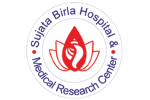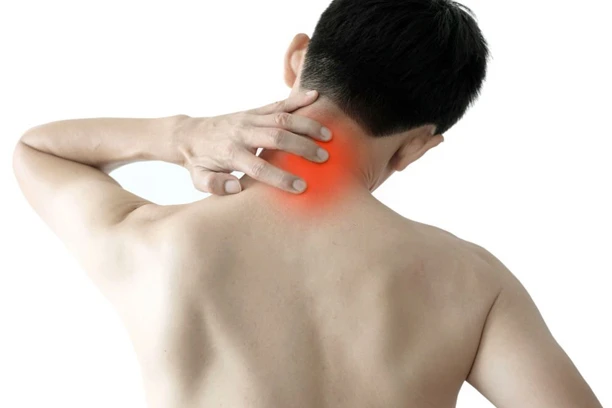The term “myositis” refers to several uncommon diseases. Weak, uncomfortable, or hurting muscles are the predominant symptoms. Usually, this steadily deteriorates over time.
Aside from being extremely exhausted after walking or standing, you can also slip or fall frequently. Any of these symptoms should prompt a visit to the doctor.
Myositis is typically brought on by an immune system issue when the body’s defences wrongly target healthy tissue.
Types of myositis
There are different types of myositis, including:
Polymyositis is a condition that primarily impacts the muscles in the shoulders, hips, and thighs. Women are more likely to be affected than men, and the normal age range is 30 to 60.
Dermatomyositis is a rash that affects several muscles. It is more prevalent in women, but it can also affect children.
Inclusion Body Myositis – IBM is a condition that causes weakness in the thigh muscles, forearm muscles, and muscles below the knee. It may also create swallowing difficulties (dysphagia). IBM is more common in men and affects those over the age of 50.
Symptoms of polymyositis
Polymyositis affects a variety of muscles, most notably those in the neck, shoulders, back, hips, and thighs.
Symptoms of polymyositis include:
- Muscle weakness
- Aching or painful muscles, as well as exhaustion
- Finding it challenging to sit or stand after a fall
- Having difficulty swallowing or holding your head up
- Feeling unhappy or depressed
It may be difficult for you to get out of a chair, climb stairs, lift objects, and comb your hair. Muscle weakness can progress to the point where even picking up a cup of tea becomes difficult.
The muscle weakness may vary from week to week or month to month, but it will worsen if you do not seek therapy.
Symptoms of dermatomyositis
Dermatomyositis symptoms are comparable to polymyositis symptoms, however there is also a distinctive rash.
A red, purple, or dark rash frequently occurs before the onset of muscle complaints. It commonly appears on the face (eyelids, nose, and cheeks) and hands (knuckles). It can also be found on the back, upper chest, elbows, and knees.
The rash may be itchy or painful, and you may develop hard lumps of tissue beneath your skin.
Diagnosing myositis
A general practitioner will ask you about your symptoms and examine you. If they suspect you have myositis, they will do certain tests to rule out other disorders that cause similar symptoms.
Tests you may have include:
Blood tests are performed to detect elevated amounts of enzymes and antibodies in your blood.
Obtaining a small sample of muscle tissue or skin (biopsy) for examination for swelling, injury, and other changes.
MRI scans
Electromyography (EMG), in which a small needle-shaped electrode is inserted through your skin and into your muscle after a local anaesthetic to record electrical signals from nerve endings in your muscles.
Treating myositis
- Exercise and physiotherapy
Exercise is a critical component of treatment for all types of myositis. It can help you minimise edoema, gain energy, and build or regain muscle strength.
If you have inclusion body myositis (IBM), exercise and physiotherapy are especially important because these are the only treatments for this type of myositis. IBM cannot be cured with medications.
Before beginning a new fitness regimen for myositis, consult with your doctor and a physiotherapist. They will assist you in developing an exercise programme that is appropriate for you.
If you have severe myositis symptoms, such as significant muscle soreness (a “flare up”) and weakness, you must exercise with extreme caution. Most experts advise against exercising at this time.
However, it is critical to keep modest mobility of your muscles and joints, especially if myositis occurred as a youngster. This prevents your joints from stiffening and becoming stuck in one position.
- Steroids
Steroids are the most commonly used medications to treat polymyositis and dermatomyositis. They help to relieve swelling and muscle discomfort immediately.
They can be administered as a pill, injection, or drip straight into a vein. Typically, you will be given a large dose to begin with, which will be gradually reduced.
Long-term usage of high doses of steroids might result in adverse effects. Among these are:
- Weight gain
- High blood pressure
- Diabetes
- Cataracts (cloudy patches in the lens of the eye)
- Osteoporosis (weakened bones)
- Disease-modifying anti-rheumatic drugs
If your muscular swelling worsens, your doctor may prescribe a disease-modifying anti-rheumatic medicine (DMARD).
DMARDs, such as azathioprine, methotrexate, cyclophosphamide, or mycophenolate, depress the immune system and aid in the reduction of edoema.
These medications take time to function, but in the long run, they may help you reduce your steroid dosage. This can help with steroid side effects.
- Immunoglobulin therapy
Immunoglobulin therapy may be required in rare cases to prevent your immune system from attacking your muscles.
This procedure entails receiving an injection of healthy antibodies (immunoglobulins) derived from donated blood.
Immunoglobulin treatment is normally administered in the hospital via a drip into a vein. You may require more than one therapy.
Complications of myositis
Some patients with myositis do not react well to treatment and report that the condition has a major impact on their daily activities and quality of life. However, continuing to exercise usually aids in the improvement of muscle strength.
Myositis that is severe might cause breathing and swallowing issues. If you’re experiencing trouble swallowing or it’s harming your ability to communicate, speech and language therapy may be suggested.
Myositis and cancer can occasionally coexist, and you can be given testing to look for malignancy.


One Comment
Pingback: Myositis: Types, Symptoms, Causes, Diagnosis, and Treatment – Sujata Birla Hospital